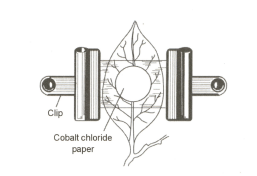Ganong's potometer is used to measure
Important Questions on Transport in Plants
Identify the correct match of the type of water given in column-I and its character in column-II and select the correct option.
| Column-I | Column-II | ||
| (i) | Capillary water | (a) | present in the form of hydrated oxides of silicon and aluminium. |
| (ii) | Hygroscopic water | (b) | goes down through large pores between soil particles and reaches the water table. |
| (iii) | Combined water | (c) | held in between small non-colloidal soil particles. |
| (iv) | Gravitational water | (d) | held tightly around soil particles by adhesive forces. |
Given below is a diagram of the stomatal apparatus. Match the labels with the corresponding names of the compounds.
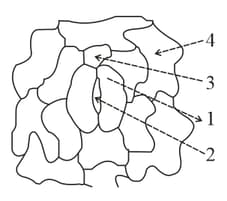
Choose the correct combination.
Study the diagram and the list given below.
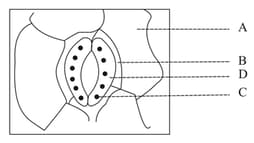
i) Chloroplast
ii) Epidermal cell
iii) Guard cell
iv) Subsidiary cell
v) Stomatal pore
The correct match is
Observe the apparatus carefully and then answer the questions that follow:
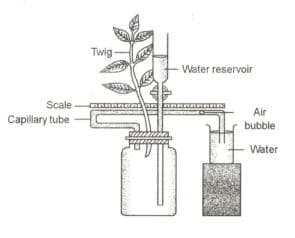
State the use of water reservoir.
Give suitable explanation for the following:
Cork and bark of trees help in preventing loss of water.
Observe the apparatus carefully and then answer the questions that follow:
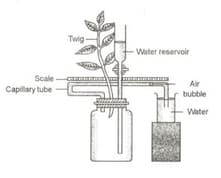
Name the apparatus.
Observe the apparatus carefully and then answer the questions that follow:
State the purpose of this apparatus.
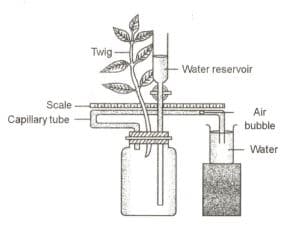
The apparatus shown below is used in an experiment to investigate water relationships in plants :
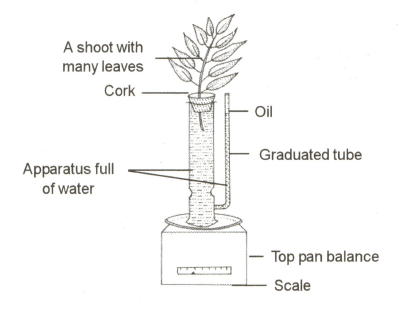
What is the function of the oil in the graduated tube?
Observe the apparatus carefully and then answer the questions that follow:
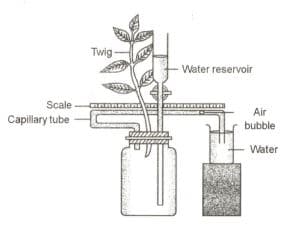
What happens to the movement of air bubbles if the apparatus is kept in sunlight?
An experiment was set up as shown in the figure given on the side. Answer the following questions:
What is the colour of cobalt chloride paper when it is dry and when it is wet?


